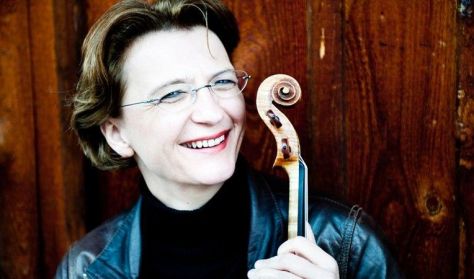
SCHUMANN’S PIANO CHAMBER MUSIC/3
COMPLETE WORKS LIVE
SCHUMANN’S PIANO CHAMBER MUSIC/3
Series Editor: Dénes Várjon
more

COMPLETE WORKS LIVE
SCHUMANN’S PIANO CHAMBER MUSIC/3
Series Editor: Dénes Várjon
more
Ön egy múltbeli eseményre keresett rá. Kérjük, válogasson aktuális kínálatunkból a Jegy.hu keresőjében!
Last event date: Wednesday, March 27 2019 7:00PM
Schumann: Five Pieces in Folk Style, Op. 102
Schumann: Ball-Scenen (Scenes from a Ball), Op. 109
intermission
Schumann: Piano Quartet in C minor, WoO 32
Antje Weithaas (violin), Szűcs Máté (viola), Várdai István (cello), Simon Izabella, Várjon Dénes (piano)
The winter of 1848/49 and the months thereafter proved to be an astonishingly fertile period in the life of Schumann. His chamber works with various instrumentalizations created around this time speak of extremely concentrated work; Five Pieces in the Popular Style written for cello and piano took just three days. Its plain structure and Biedermeier images evoke an intimate atmosphere of music-making at home. The same holds true for Scenes from a Ball (1851) composed as a piano four-hand, which is a showy garland for the fashionable dances of the age – Polonaise, Walzer, Ungarisch, Française, Mazurka, Ecossaise, Walzer.
Contrary to all that has gone so far, the Piano Quartet in C minor (1829) is the work of Schumann at the dawn of his career: he was just 19 when he completed it. We learn from his diary that even decades later he clearly remembered a defining moment in the process of putting this quartet together: while writing the middle part of the third movement “a spirit [of Romanticism] different from earlier music manifested itself, and a new poetic life appeared to disclose itself to me”. Despite this, he did not consider the piece worthy of being put into print and it had to wait until 1979 before being published.
„A legnagyobb nevű külföldi zongorista sem kelt nagyobb érdeklődést, mint Ránki Dezső” – írta 1970-ben a zenekritikus Pernye András a…
A Zeneakadémia hallgatóiból alakult trió minden ízében romantikus repertoárt tűzött műsorára. A koncert első felében két olyan alkotást hallhat a…
item(s) in basket
total:
Time limit has expired. Please, put item(s) in to basket again.